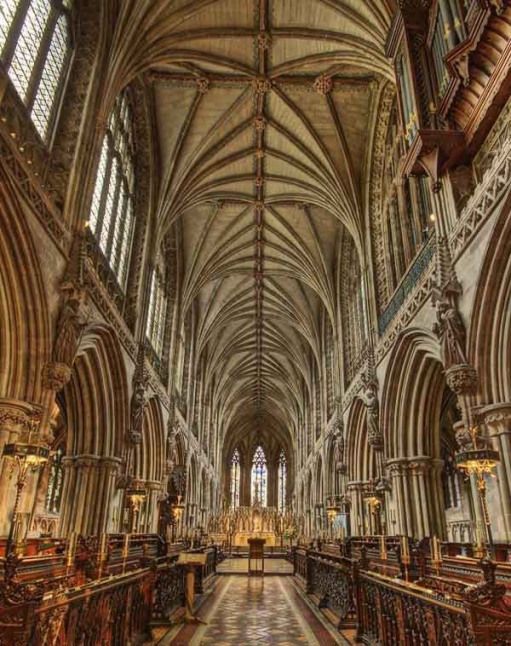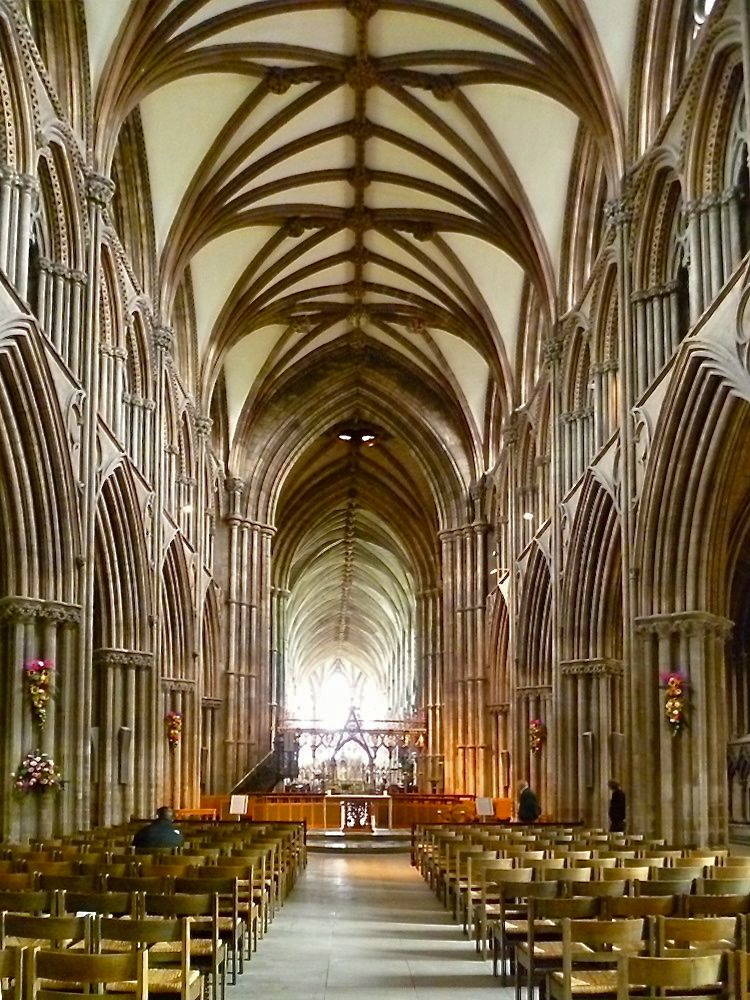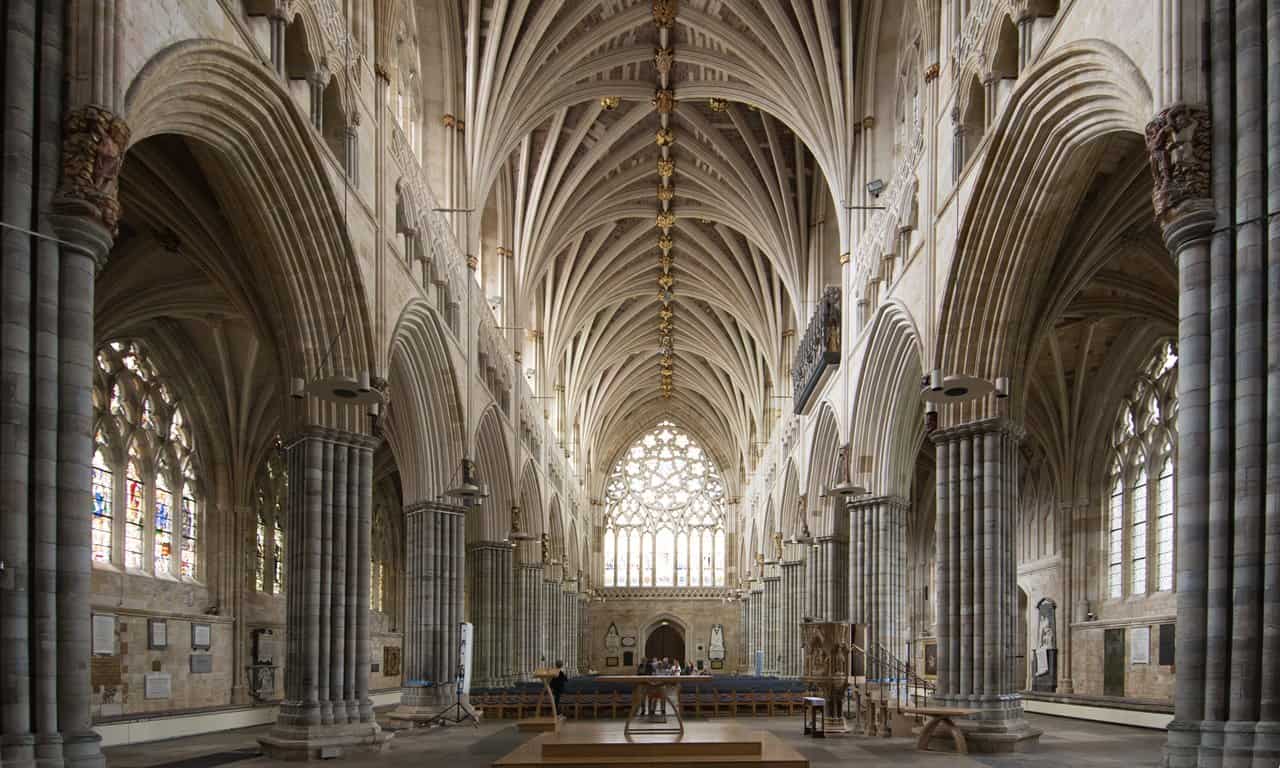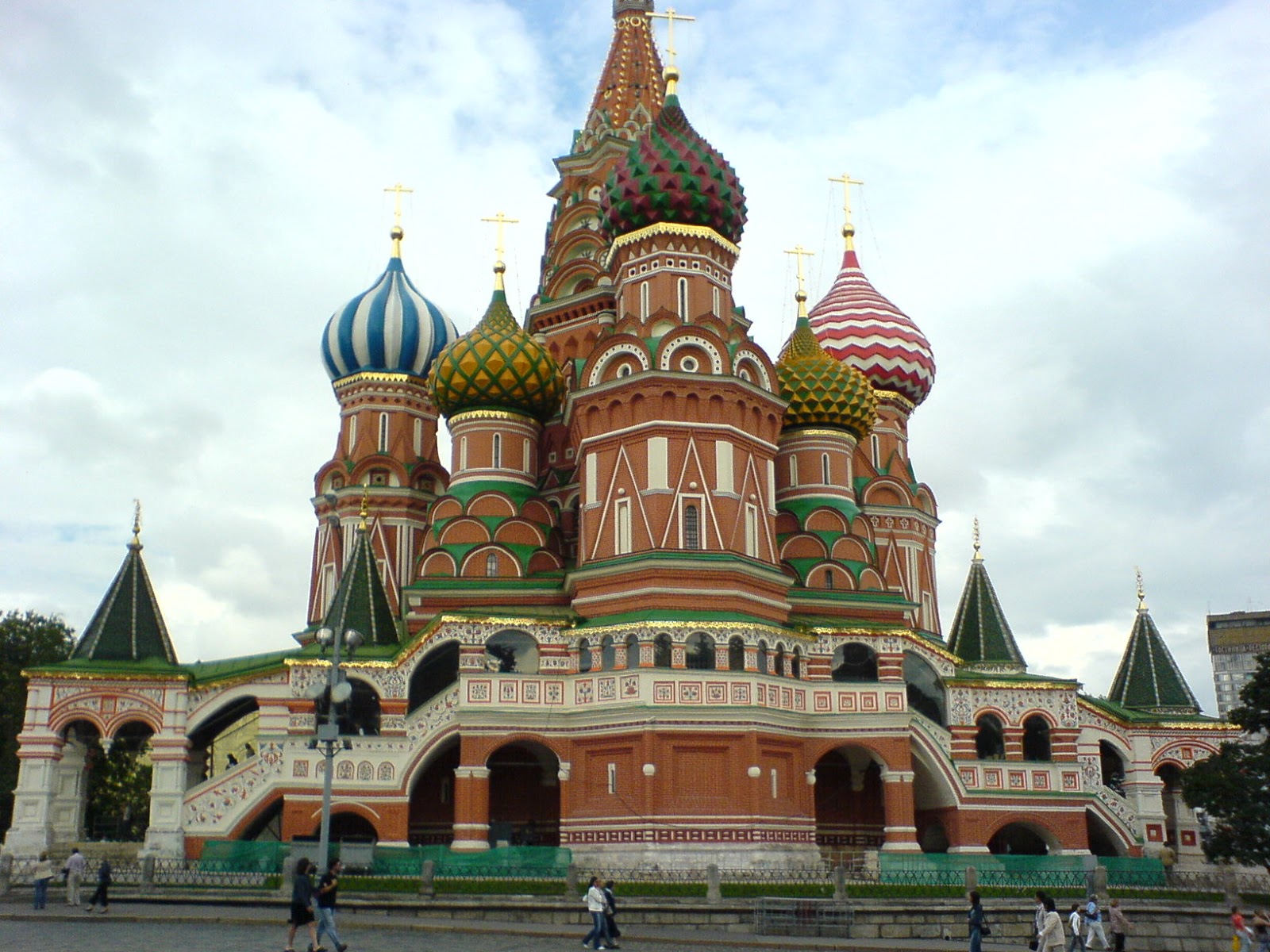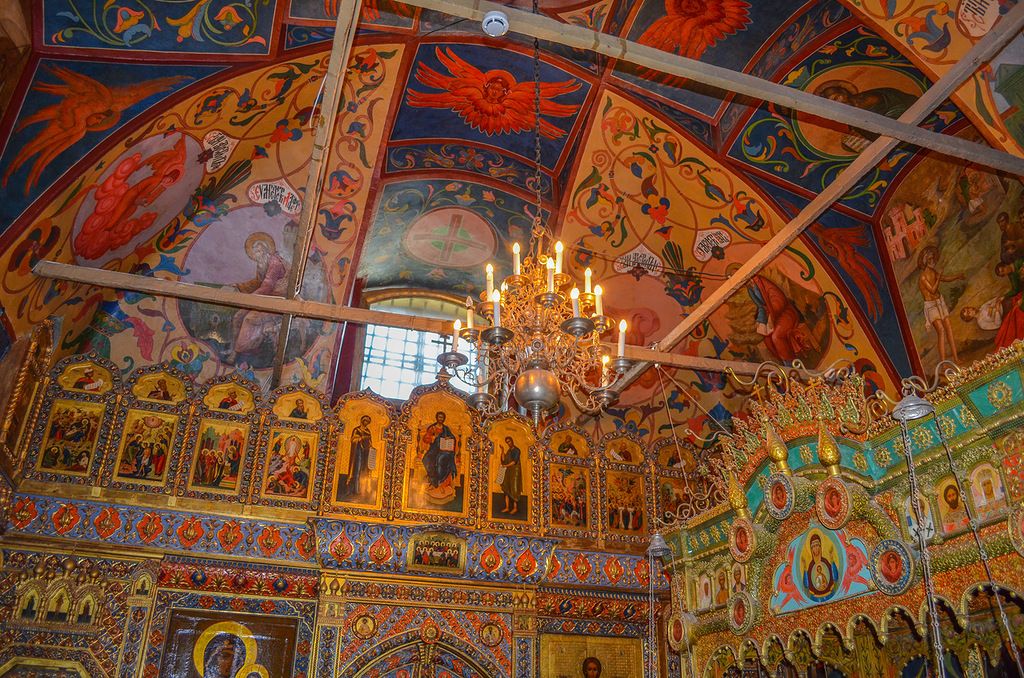Well firstly what just boggles my mind, is the sheer grandiosity of all these different buildings. Cathedrals, mosques, churches, government buildings, water towers, star forts etc. that were built hundreds of years before motorized power tools were a thing. The immaculate beauty of these structures is something that I never really gave any extra thought to. Consider these few examples:
Lichfield Cathedral in England
Originally built in the 13th-14th century, the cathedral has been restored in the 19th century (as were 80% of all Church of England churches according to Wikipedia). In a time where horse and carriage were the main mode of transportation it seems unbelievable to me the level of mastery of this architecture. May be I'm just underestimating the capabilities of people back then, and seeing as I have no extensive knowledge about architecture and historical building methods, this could just be a layman's misconception, but I'm absolutely awestruck by the perfection of these structures.
Also to note, what the documentary draws attention to, the ornaments and windows that have in many cases a similar or exact shape of a cavity
magnetron. This is something that is to be found in many of these structures, all over the world. In the first video I posted, he goes into this topic around the 1:28 mark. What he ties into this hypothesis (buildings as 'machines') is also the fact that most domes and roof ornaments are made out of copper and gold (conductors of electricity).
Here's an interior view of Lichfield Cathedral.
Exeter Cathedral, also in England
This one also finished in the 14th century, sports - according to Wikipedia - "the longest uninterrupted medieval stone vaulted ceiling in the world".
Interior view:
Saint Basil's Cathedral in Moscow, Russia
From Wikipedia: "Dmitry Shvidkovsky, in his book
Russian Architecture and the West, states that "it is like no other Russian building. Nothing similar can be found in the entire millennium of Byzantine tradition from the fifth to the fifteenth century ... a strangeness that astonishes by its unexpectedness, complexity and dazzling interleaving of the manifold details of its design."
A shot from inside.
A thing I remembered now from the documentary was the fact that red bricks apparently are capable of storing electricity, another possible point for these theories. The hypothesis being that the buildings were batteries of sorts.
I will stop uploading images now as it truly is an uphill struggle to put this together with my dreadful internet connection.
Continuing around the 1:40 mark in the first documentary, he gives countless examples and further dissection of this theory.
He also mentions hydrotherapy and the subsequent sweeping under the rug of that practice at the turn of the century.
He later (after the 2 hour mark) goes more in-depth on the topic of star forts and shows numerous examples from all over the world where even many major cities seem to have a very similar geometric outline as we see in the designs of the smaller star forts. In the aerial shots we can see pretty much the level of perfection of crop circles in these structures and towns. How were they able to do this without advanced technology?
He also shows this video, of a moving sidewalk apparently in Paris at the turn of the century. What's up with this? What technology are they using?
Another aspect which I find interesting is that apparently in many of the buildings from this era, there are no toilets, and no kitchens. Where did people make peepee and poopoo?
At 2:48 he mentions amphitheaters, that yes, do look like speakers. Amp = unit of electric current. Amplify = make something louder. Amplifier = increase signal. Also in that vein, Cathedral - Cathode.
At the 3 hour mark he goes on to trying to decipher Fulcanelli's writings in the Mysteries of the Cathedrals. Check it out yourself and see if you think his interpretations are any good. I can't say.
These are at least some of the points I found interesting.
We know about ancient Rome, but in these cases there exists documentation indicating that whatever happened, happened within the last 300 years.
This is something that's hard for me to wrap my head around. Still up to about a year ago, I really did believe that history (at least as recent as a few hundred years) was a open and shut case, that we know what was going on. It seems to me now, more and more, that a lot of things were much more recent than we are led to believe, and that a lot of historical events are kind of fragmented into pieces and spread over a longer time period, and that one event serves as the basis or source for what we perceive as being many separate events.


